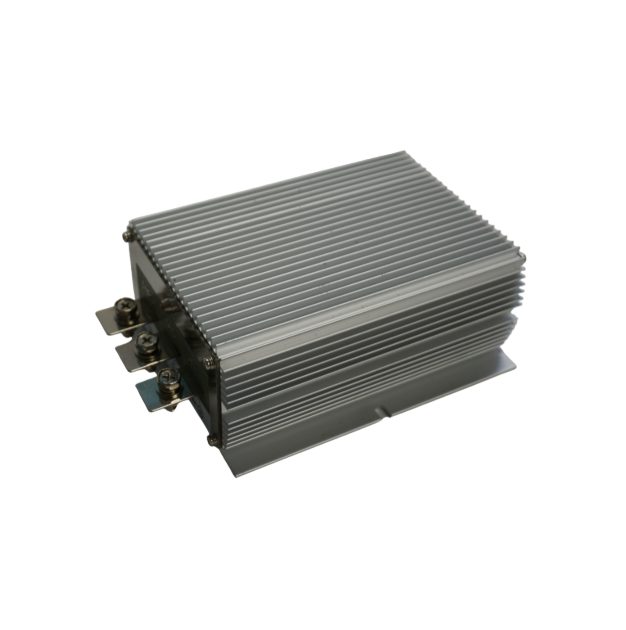Notifications

8 minutes, 50 seconds
-13 Views 0 Comments 0 Likes 0 Reviews

As solar energy continues to reshape how we power our homes, vehicles, and devices, a growing need has emerged: efficiently converting the higher voltages produced by solar panels to a usable level for low-voltage DC appliances. One of the most practical tools for this purpose is the Solar DC-DC Step Down Converter for 12V DC Appliances, which enables the seamless operation of 12V DC appliances in solar-powered systems.
From remote cabins and RVs to marine setups and DIY solar projects, this compact yet powerful converter plays a crucial role in adapting solar energy into stable, safe, and usable power for everyday electronics and tools.
A DC-DC step down converter, also called a buck converter, is an electrical device that reduces a higher direct current (DC) voltage to a lower DC voltage level. In the context of solar energy, these converters take the variable and often higher voltage output from solar panels and reduce it to a constant 12V output suitable for standard appliances.
For example, even a “12V solar panel” typically outputs around 18V–21V under peak sunlight. Directly connecting a 12V device to such a panel without regulation can damage it. A step down converter bridges this gap, providing consistent voltage and protecting your equipment.
12V appliances are standard in many mobile and off-grid applications. This voltage has become the go-to for a variety of reasons:
Automotive Compatibility: Many 12V devices are designed for vehicles, which commonly use 12V electrical systems.
Energy Efficiency: Lower voltage systems typically reduce energy conversion losses.
Portability: 12V appliances are more compact and easier to integrate into battery-powered or solar-powered systems.
Examples of 12V DC appliances include:
LED light strips
Portable coolers
Mini water pumps
Fans and ventilation systems
Communication radios
CCTV cameras
These appliances are particularly common in mobile homes, RVs, boats, and remote shelters—places where solar energy is frequently the primary or backup power source.
Solar panels are designed to generate enough voltage to charge batteries, often exceeding 12V in output. Connecting a 12V appliance directly to a panel can cause:
Over-voltage damage
Inconsistent performance due to changing sunlight levels
Premature failure of sensitive components
This is where the solar DC-DC step down converter becomes essential. It regulates the voltage down to exactly 12V, ensuring stable, safe, and efficient operation of connected devices.
At the heart of a DC-DC step down converter is a high-frequency switching circuit that includes components such as transistors, inductors, and capacitors. Here's how the process works:
Input Reception: The converter receives power from the solar panel or battery at a higher voltage (e.g., 18V, 24V, or 36V).
Switching Regulation: The internal transistor switches on and off rapidly, controlling the current flow through an inductor.
Voltage Reduction: The inductor and capacitor filter this pulsed energy into a steady 12V DC output.
Feedback Loop: Modern converters use a feedback mechanism to maintain output voltage regardless of input fluctuation or load variation.
High-efficiency converters can operate at over 90% efficiency, meaning minimal power is lost as heat.
Direct connection to an unregulated power source can burn out appliances. A converter protects your investment by delivering safe, consistent power.
You can use high-voltage solar systems (24V, 36V, or 48V) and still run 12V devices, which expands your design possibilities.
By allowing high-voltage panels to operate at optimal conditions while stepping down power only where needed, converters reduce total energy loss.
Converts fluctuating solar panel output into a stable power supply for devices that require precise input voltage.
When selecting a converter for your solar-powered setup, consider the following features:
Input Voltage Range: Match it to your panel or battery (common ranges include 8–32V or 12–60V).
Output Voltage: Make sure it provides a regulated 12V DC output.
Current Capacity: Check the amperage rating. For instance, a 10A converter can handle up to 120W of 12V appliances.
Efficiency Rating: Look for models rated 90% or higher.
Cooling System: Models with heat sinks or fans are better for continuous high-current loads.
Protection Features: Choose units with over-voltage, short-circuit, and thermal protection.
Waterproofing (IP65 or higher): Especially for outdoor or marine installations.
Off-grid homes often rely on 24V or 48V solar systems for efficiency. A 12V DC-DC converter allows you to run lights, fans, and entertainment systems without reconfiguring your whole setup.
RVs often use solar panels to charge a 24V battery bank. A DC-DC converter steps this down to 12V for powering fans, fridges, or lighting systems during travel or while parked.
Marine vessels require reliable, waterproof power systems. Solar panels on deck can charge batteries, while DC-DC converters deliver stable 12V output to critical electronics.
Remote stations that use solar panels for energy often need 12V to power radios, routers, and surveillance cameras. DC-DC converters ensure stable operation, even under fluctuating solar conditions.
Portable solar kits with built-in step down converters can power medical equipment, communication devices, or lighting in off-grid emergency scenarios.
Mount in a Cool, Dry Place: Prevent overheating and moisture damage.
Use Appropriate Wiring: Ensure wires are thick enough for the current to avoid voltage drops or overheating.
Add Fuses and Breakers: Always include protective elements on both the input and output sides.
Test Before Use: Verify output voltage with a multimeter before connecting appliances.
Avoid Overloading: Stay within the rated current to prevent thermal shutdown or component failure.
The Solar DC-DC Step Down Converter for 12V DC appliances is an essential component for anyone using solar energy to power off-grid electronics. Whether you're building a mobile solar system for your RV or setting up a remote cabin with solar lighting, these converters ensure your 12V devices operate safely and efficiently.
By carefully choosing the right converter and integrating it properly, you can enjoy reliable, low-maintenance solar power that works seamlessly with the appliances you already use.

